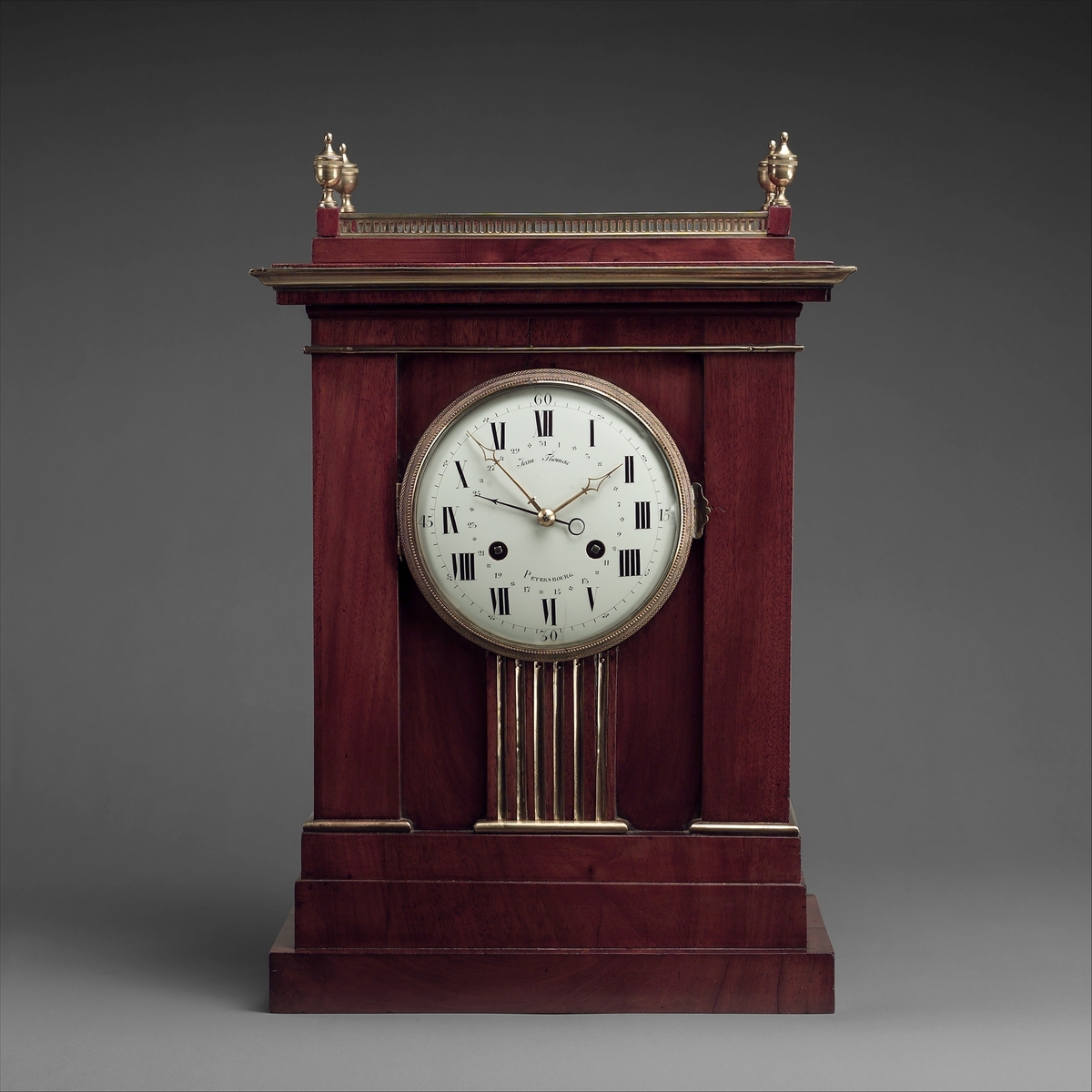Source

Source: Clock, Workshop of David Roentgen, c. 1780-1790. Metropolitan Museum of Art
Technological advancements in the late seventeenth and early eighteenth century allowed the construction of accurate pendulum mechanisms for clocks, and the workshops of master craftsmen like David Roentgen (1743-1807) furnished them with luxurious classical cases for the homes of wealthy elites. From his workshop in Neuwied, Roentgen produced furniture and clocks for wealthy clients throughout Europe, including the French queen, Marie Antoinette, and the Russian empress, Catherine the Great. The Prussian King Frederick William made him commercial agent for the Lower Rhine region in 1792, but a year later the outbreak hostilities following in the wake of the French Revolution spelled the beginning of the end of Roentgen’s business ventures. During the French occupation of the Rhineland in 1798, he was forced to close his manufactory in Neuwied and died in financial ruin in 1807. This exquisite example of Roentgen’s work, a desktop clock, demonstrates the marriage of horological technology and neoclassical artistic style to create expensive furnishings meant to display the wealth and taste of their elite owners.

Source: Clock, Workshop of David Roentgen, c. 1780-1790. Metropolitan Museum of Art
Metropolitan Museum